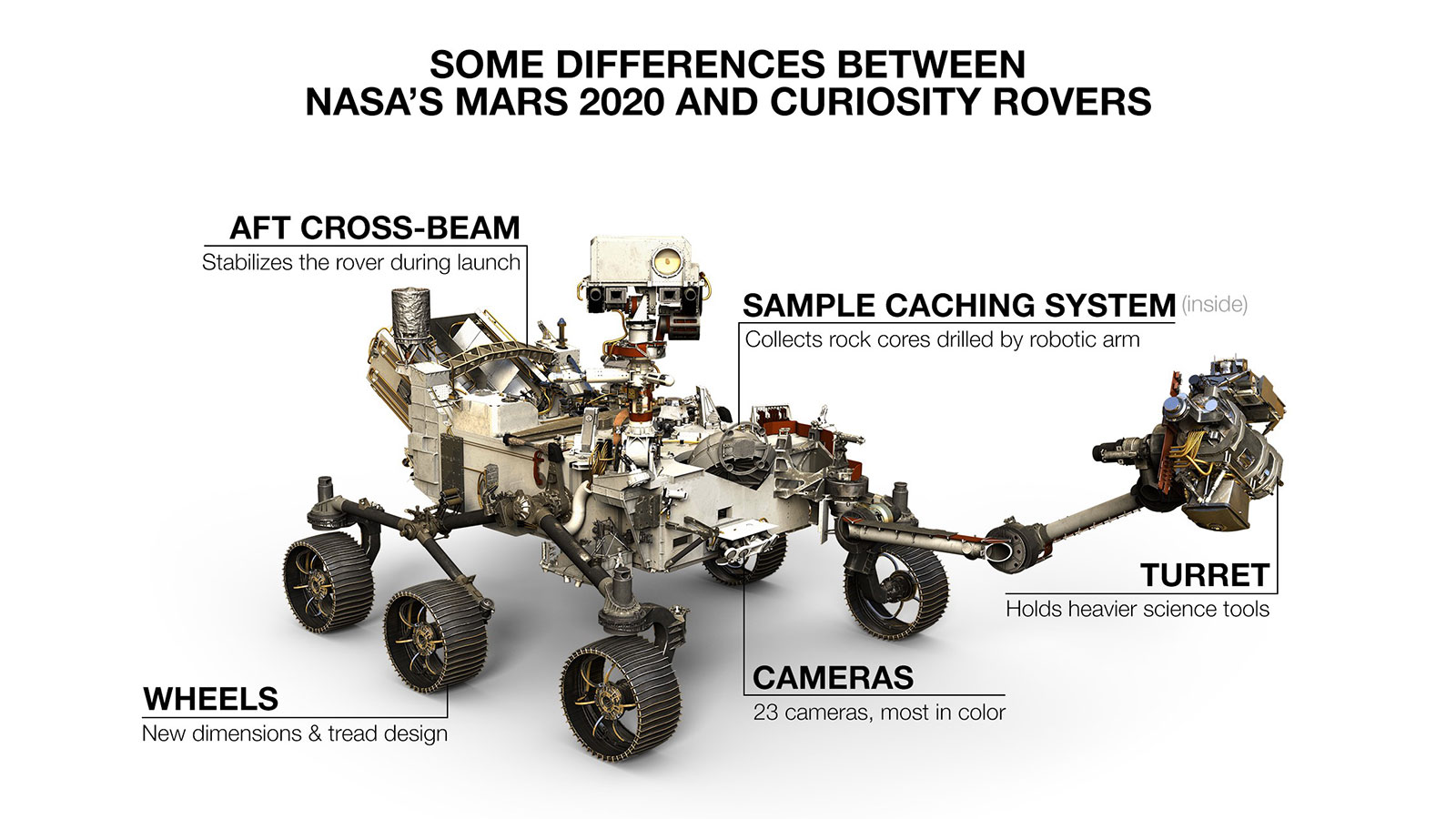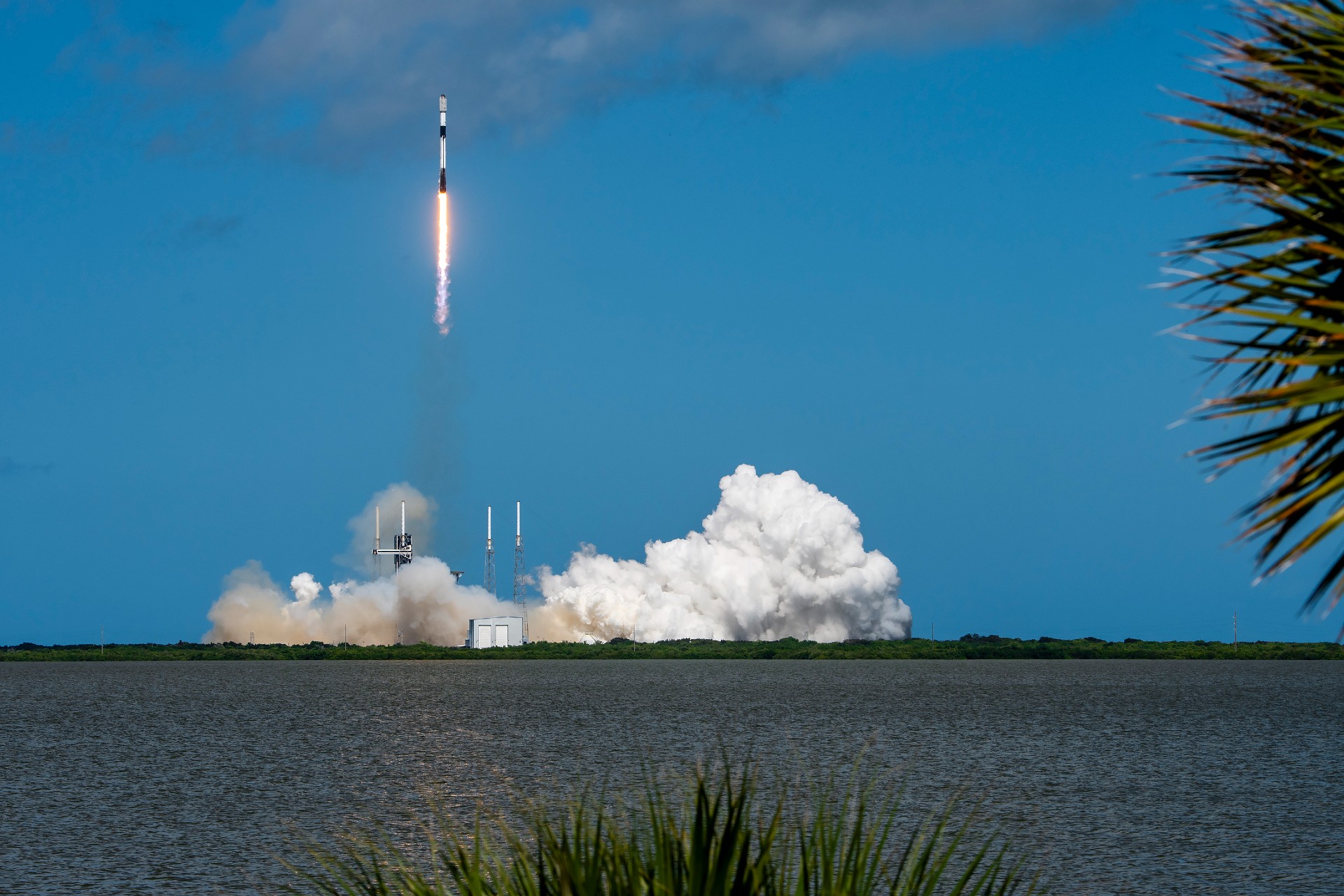

Space
NASA’s next Mars mission will search for fossilized remains of ancient life near once lake
NASA is gearing up to launch its next Mars rover. Dubbed 2020, the roving scientist is set to blast off to the Red Planet next year, aiming to find signs of life and bag samples for eventual return to Earth.
The rover, scheduled to launch next summer, will touch down in February 2021. It’s landing site: a 28-mile-wide crater on the Martian surface, dubbed Jezero Crater, which scientists think hosted a lake in Mars’s past.
Recent data collected from the Mars Reconnaissance Orbiter also shows that Jezero contains mineral deposits known to preserve microfossils here on Earth.
Hydrated silica is one such mineral and thanks to the eagle-eyed orbiter, scientists have identified not one but two patches in the crater.
Orbital imagery has also revealed the remnants of a large delta in Jezero. Deltas are the place where rivers drain into a lake. These are promising areas for life and one of the main factors in choosing this specific location as the landing site.
“The landing site in Jezero Crater offers geologically rich terrain, with landforms reaching as far back as 3.6 billion years old, that could potentially answer important questions in planetary evolution and astrobiology,” Thomas Zurbuchen, associate administrator for NASA’s Science Mission Directorate said in a news release.”Getting samples from this unique area will revolutionize how we think about Mars and its ability to harbor life.”
A map of the mineral content in Jezero crater. The green color represents carbonates, which are good at preserving fossilized life on Earth. Credit: NASA/JPL-Caltech.
But that’s not the only exciting discovery at Jezero. Carbonate minerals were also found. This is exciting because many organisms here on Earth use carbonate minerals to make sturdy structures, like seashells. These structures can last for billions of years once fossilized.
Scientists say that carbonates plus evidence of ancient water is the perfect combination for preservation. Meaning it’s an excellent spot to search for any signs of past lifeforms and to uncover clues about Mars’s climate history.
Carbonates are not biosignatures or signs of life, but they’re an exciting discovery because they form from the interaction between water and carbon dioxide. So they could also tell us how Mars transitioned from a warm and wet climate to the harsh, cold desert world we see today.
“The possibility that the ‘marginal carbonates’ formed in the lake environment was one of the most exciting features that led us to our Jezero landing site. Carbonate chemistry on an ancient lakeshore is a fantastic recipe for preserving records of ancient life and climate,” Ken Williford Mars 2020 Deputy Project Scientist said in a statement. “We’re eager to get to the surface and discover how these carbonates formed.”
Anatomy of a Mars2020 rover. (Credit: NASA/JPL-Cal-tech)
The Mars 2020 rover will scan the crater in search of any potential biosignatures. To that end, the robotic scientist will act as a remote geologist, studying rocks in fine details, caching samples for later return to Earth, and using special instruments to identify minerals in rocks.
Another big aspect of the Mars 2020 mission will be to collect samples for eventual return to Earth, where scientists around the world can study the material.
Mars 2020, will receive an official name before launch as part of a student naming competition hosted by NASA. The six-wheeled rover is destined to touch down in Jezero crater on Feb. 18, 2021, following a July 2020 launch. Around the same time, it’s European counterpart, the Rosalind Franklin ExoMars rover will arrive on Mars at a soon-to-be-announced location.

Cybertruck
Tesla Cybertruck fleet takes over at SpaceX’s Starbase
Interestingly, the Cybertruck uses the same exterior, a stainless steel alloy, as SpaceX rockets. This synergy between the two companies and their very different products shows a very unified mentality between Musk companies.

Tesla Cybertrucks have taken over at SpaceX’s Starbase facility in Texas, as hundreds of the all-electric pickup trucks were spotted late last week rounding out a massive fleet of vehicles.
The Cybertruck fleet is geared toward replacing gas vehicles that are used at Starbase for everyday operations. The only surprise about this is that it was not done sooner:
Was just visiting. pic.twitter.com/5Q9wPPaeuH
— Derek Li (@derek1ee) October 31, 2025
Deliveries have been going on for a few weeks, as Cybertrucks have made their way across the state of Texas from Austin to Starbase so they could be included in SpaceX’s fleet of vehicles at the facility.
Interestingly, the Cybertruck uses the same exterior, a stainless steel alloy, as SpaceX rockets. This synergy between the two companies and their very different products shows a very unified mentality between Musk companies.
However, there are some other perspectives to consider as SpaceX is utilizing such a massive fleet of Cybertrucks. Some media outlets (unsurprisingly) are seeing this as a move of weakness by both Tesla and SpaceX, as the aerospace company is, in a sense, “bailing out” lagging sales for the all-electric pickup.
It’s no secret that Tesla has struggled with the Cybertruck this year, and deliveries have been underwhelming in the sense that the company was anticipating between 1 million and 2 million orders for the vehicle before it was widely produced.
A lot of things changed with the Cybertruck between its 2019 unveiling and 2023 initial deliveries, most notably, price.
The price of the Cybertruck swelled significantly and priced out many of those who had pre-ordered it. Some have weighed the option of whether this purchase was a way to get rid of sitting inventory.
However, it seems more logical to consider the fact that SpaceX was likely always going to transition to Teslas for its fleet, especially at Starship, at some point.
It doesn’t seem out of the question that one Musk company would utilize another Musk company’s products, especially considering the Cybertruck has been teased as the vehicle that would be present on Mars.
News
SpaceX opens up free Starlink service for those impacted by Hurricane Melissa

SpaceX is opening up its internet service, Starlink, to those impacted by Hurricane Melissa, as it made landfall in Jamaica and the Bahamas as a Category 5 storm.
Hurricane Melissa is expected to reach wind speeds of over 165 MPH over the next few days as it extends out into the Atlantic Ocean by Thursday and Friday.
Satellite imagery shows Hurricane #Melissa‘s growth from its formation on October 21 to a Category 5 hurricane through October 27, 2025. #HurricaneMelissa pic.twitter.com/goR3Hbgb9c
— The Weather Network (@weathernetwork) October 27, 2025
Citizens in Jamaica and the Bahamas have been preparing for the storm for the past week, getting necessary goods together and preparing for the massive storm to arrive. It finally did yesterday, and the first images and video of the storm are showing that it could destroy many parts of both countries.
Starlink is now being opened up for free until the end of November for those impacted by the storm in Jamaica and the Bahamas, SpaceX announced today:
For those impacted by Hurricane Melissa in Jamaica and the Bahamas, Starlink service is now free through the end of November to help with response and recovery efforts → https://t.co/fUko3xSviJ
— Starlink (@Starlink) October 28, 2025
It is a move similar to the one the company made last year as Hurricane Helene made its way through the United States, destroying homes and property across the East Coast. SpaceX offered free service for those impacted by the destruction caused by the storm.
The free Starlink service was available until the end of 2024.
Elon Musk’s companies have also made similar moves to help out those who are impacted by natural disasters. Tesla has offered Free Supercharging in the past, most notably during the California wildfires.
Tesla and SpaceX’s LA fire relief efforts: Cybertrucks, free Starlink and more
One major advantage of Starlink is that it is available for use in situations like this one, where power might be required to operate things like a modem and router.
Internet access is a crucial part of survival in these situations, especially as it can be the last leg some stand on to get in touch with emergency services or loved ones.
News
SpaceX reaches incredible Starlink milestone

SpaceX has reached an incredible milestone with its Starlink program, officially surpassing 10,000 satellites launched into low Earth orbit since starting the program back in 2019.
Last Sunday, October 19, SpaceX launched its 131st and 132nd Falcon 9 missions of 2025, one from Cape Canaveral, Florida, and the other from Vandenberg, California.
The 10,000th Starlink satellite was aboard the launch from California, which was Starlink 11-19, and held 28 v2 mini optimized satellites.
The achievement was marked by a satellite tracker developed by Jonathan McDowell.
🚨 With its Falcon 9 launch last Sunday, SpaceX officially has 10,000 Starlink satellites in orbit pic.twitter.com/xS5RVZ4ix0
— TESLARATI (@Teslarati) October 26, 2025
The first Starlink launch was all the way back on May 23, 2019, as SpaceX launched its first 60 satellites from Cape Canaveral using a Falcon 9 rocket.
Of the over 10,000 satellites in orbit, the tracker says 8,608 are operational, as some are intentionally de-orbited after becoming faulty and destroyed in the atmosphere.
SpaceX has truly done some really incredible things during its development of the Starlink program, including launch coverage in a global setting, bringing along millions of active subscribers that use the service for personal and business use, locking up commercial partnerships, and more.
Starlink currently operates in around 150 countries, territories, and markets and is available at least somewhere on all seven continents.
Additionally, Starlink has over 5 million subscribers worldwide, and 2.7 million have joined the program over the past year. It has revolutionized internet access on commercial aircraft as well, as several high-profile airlines like Qatar and United, among many others, have already installed Starlink on some of their planes to deliver more stable connectivity for passengers and crew.
SpaceX has the approval to launch 12,000 Starlink satellites from the FAA, but it plans to bring over 30,000 to its constellation, giving anyone the ability to have access to high-speed internet.








